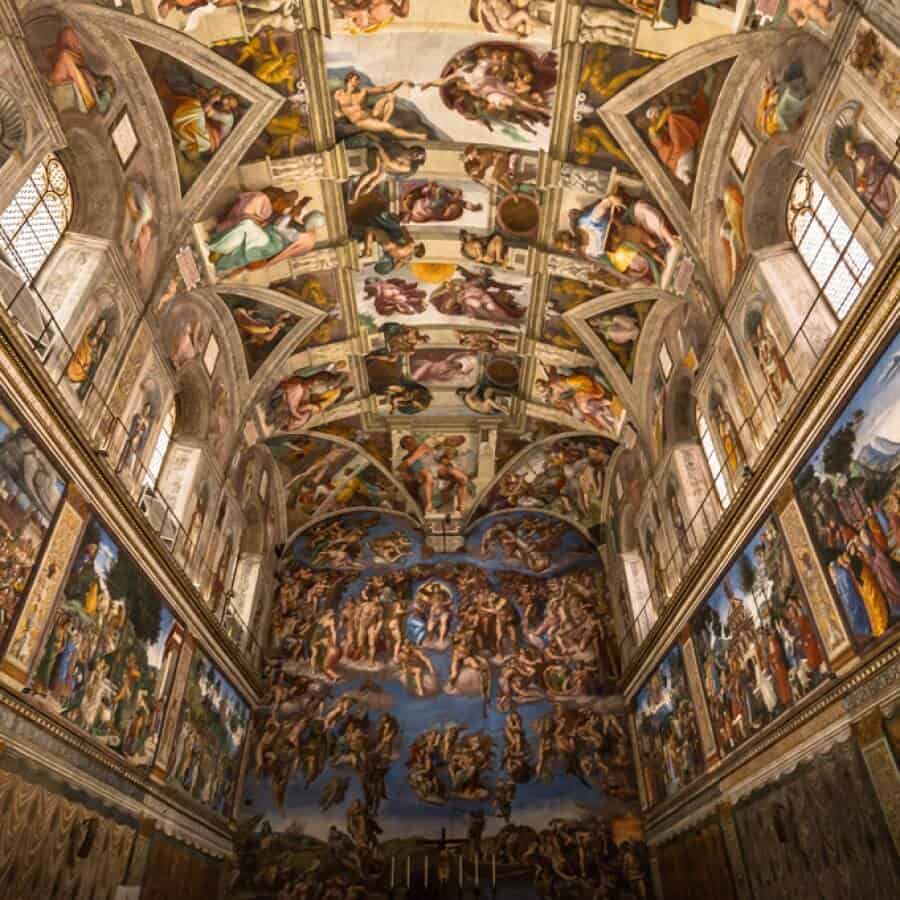When it comes to Michelangelo Buonarroti, most would probably recall the frescoes of The Sistine Chapel in the Apostolic Palace in Vatican City which is the official residence of the Pope. Quite plausibly, Michelangelo might have been a little stirred with this assignment, since he considered himself a sculptor and an architect, not a painter. Work on Sistine Chapel was a personal struggle for him, not a joy. Despite that he created a masterpiece that is worthy of admiration.

Ceiling of Sistine Chapel by Michelangelo / Photo: Shutterstock
The Sistine Chapel was completed in 1481 and consecrated in 1483. The initial adornment of the ceiling from 1482 consisted of the sky with stars. Construction defects in the vault and the arrival for the new Pope brought on the idea of creating more of a grandiose masterpiece.
Michelangelo hated his new task and Pope Julius II insisted on it and thus Michelangelo started his work on it. He was very insecure about the final opinion of the public. The initial paintings were destroyed by the master himself just to be repainted in his own vision.
It took Michelangelo fours years to complete the ceiling of the Sistine Chapel. He only had a few people at hand who mostly prepared the colours and the walls for layering the fresh paint, which is typical for the work of frescoes.
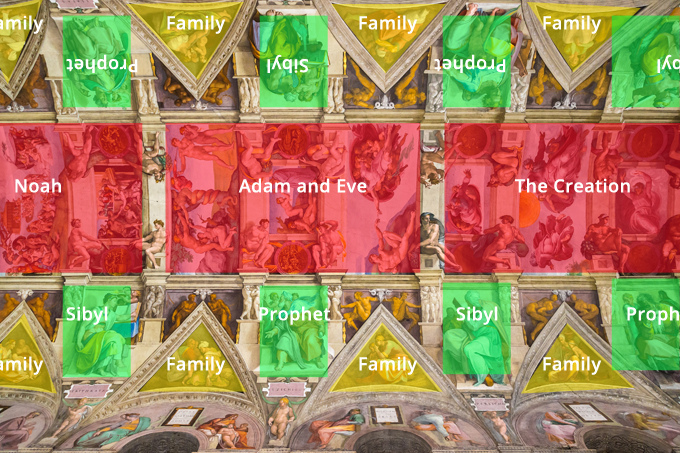
Ceiling of Sistine Chapel with divisions / Photo: Shutterstock / Graphic Design: Martina Advaney
The centre is adorned with the Creation of Adam and Eve and their expulsion from paradise. On one side from the center are three divisions, dedicated to The Creation. On the other side from the center are three stories of Noah.
The second plan portrays Prophets and Sibyls. The four pendentives are dedicated to the salvation of the Jewish people.
The last plan is decorated with the ancestors of Jesus.
Now let’s have a look at the more interesting and mysterious part of Michelangelo’s work.
The Renaissance was after the dark era. The refreshing times were celebrated with many forms of art. Artists were exempted from many of the doctrines,… still it was better to keep some of the activities hidden. Autopsy was a major one. All important artists were keen to know about the functioning of the human body but kept it surreptitious.
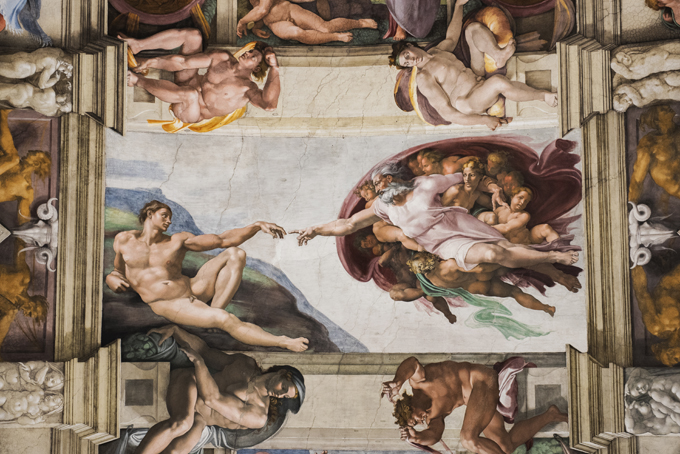
The Creation of Adam / Photo: Shutterstock
The touch of fingers between Adam and God is one of the most iconic symbols. The entire part of Creation might be something more than what it shows.
Two experts of neuro anatomy Ian Suk and Rafael Tamargo at the Johns Hopkins University School of Medicine in Baltimore, Maryland claim, Michelangelo might have hidden his study of anatomy of which almost none evident in the figure of God.
Some also say, that it reflects Michelangelo in the creation of the ceiling
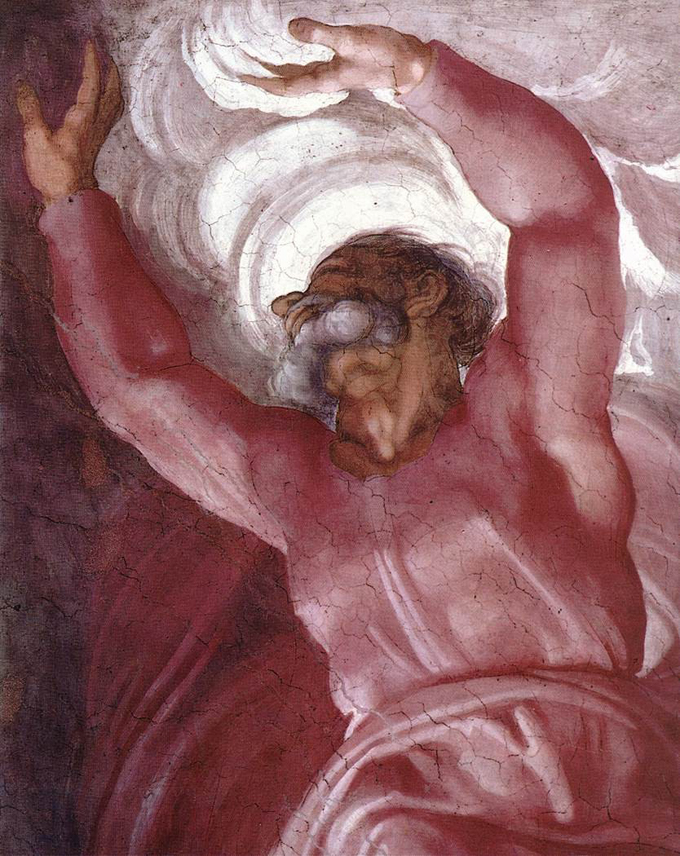
The image of God in the act of Creation / Photo: Wikimedia
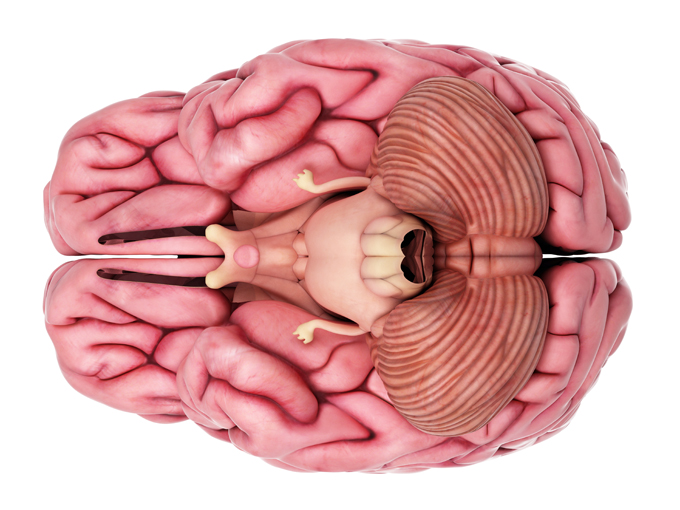
Image of Brain showing the anatomical accuracy with the picture above / Photo: Shutterstock
Another article by physician Frank Meshberger, published in the Journal of the American Medical Association from 1990, recognises the anatomically correct brain in a cross sectional view, in the painting of God Creating Adam. He suggests, apart from life, human was also being given supreme intelligence.
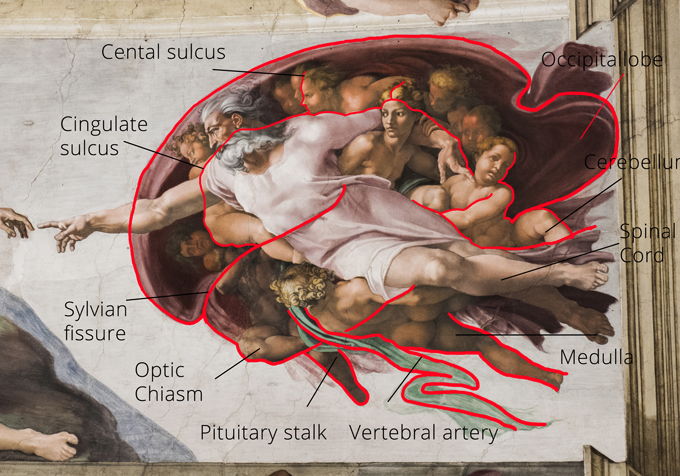
The Creation of Adam? / Photo: Shutterstock / Graphic Design: Martina Advaney
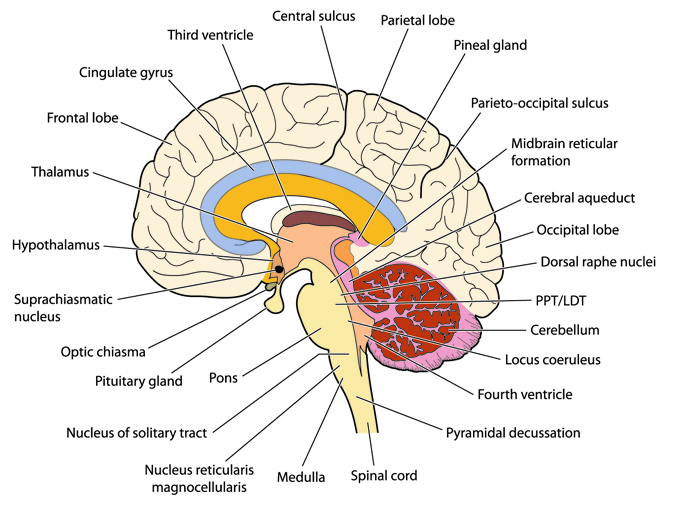
Brain in Cross Section / Photos: Shutterstock
Or could Michelangelo have had, in mind something even more radical?
Michelangelo´s approach to religion was not clearly defined during his lifetime. If ever there was faith, it was fading and he was becoming more of a spiritual soul. Could he then, by his own interpretation, imply some connection, that human form as God and his body as the temple?
A small book, “Prayers of the Cosmos: Meditations on the Aramaic Words of Jesus“, by Neil Douglas-Klotz, was published in 1990s. Douglas-Klotz offers popular variations on The Lord´s Prayer with a great difference. He uses an Aramaic language, which was the language, together with Greek, spoken by Jewish people at the turn of the era. It was the language of Jesus, as well. The Aramaic language is a rich and many of the words have several synonyms. Therefore, one word could simply have several meanings and only an experienced person, knowledgeable in the peculiarities of the language would possibly choose the correct interpretations. The Father could also be the Mother or the entire Cosmos. The reaching out to God can also be searching harmony and balance within.
Could Michelangelo have meant something to this effect, several centuries ago?
Whichever way it was, Michelangelo was a very talented in many subjects, as was right and proper for a Renessaince man.
The frescoe of the Last Judgement deserves a bit more attention and not just a paragraph. It also shows his sense of humour which prompts me to elaborate.
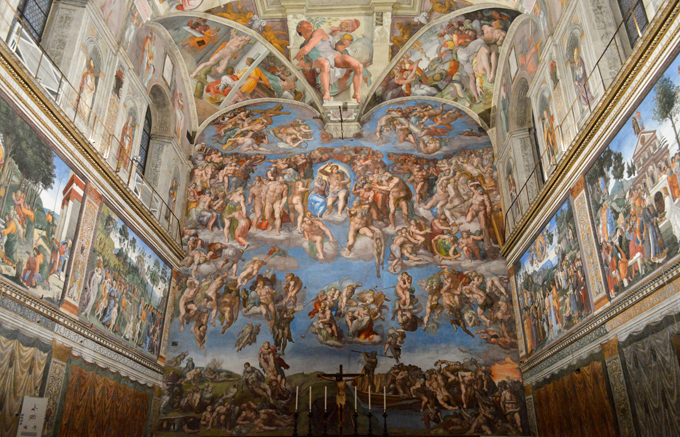
The last judgement / Photo: Flickr – Francisco Anzola
Michelangelo worked for several sequentially elected Popes since he lived to a good age of 88. The work on Last Judgment was originally assigned by Pope Clement VII and completed during the time of Pope Paul III. Michelangelo, known for his passion for figure painting, created a vast monumental plan in three parts: Heaven, Purgatory and Hell. On the occasion of completion the Pope was accommpanied by the master of ceremonies Biagio da Cesena, to see the final work. Biagio da Cesena couldn´t help but launch a wave of criticism towards the painting.
“…it was mostly disgraceful that in such a sacred place there should have been depicted, all those nude figures, exposing themselves so shamelessly…” Then he continued that it all was more suitable: “…for the public baths and taverns…”
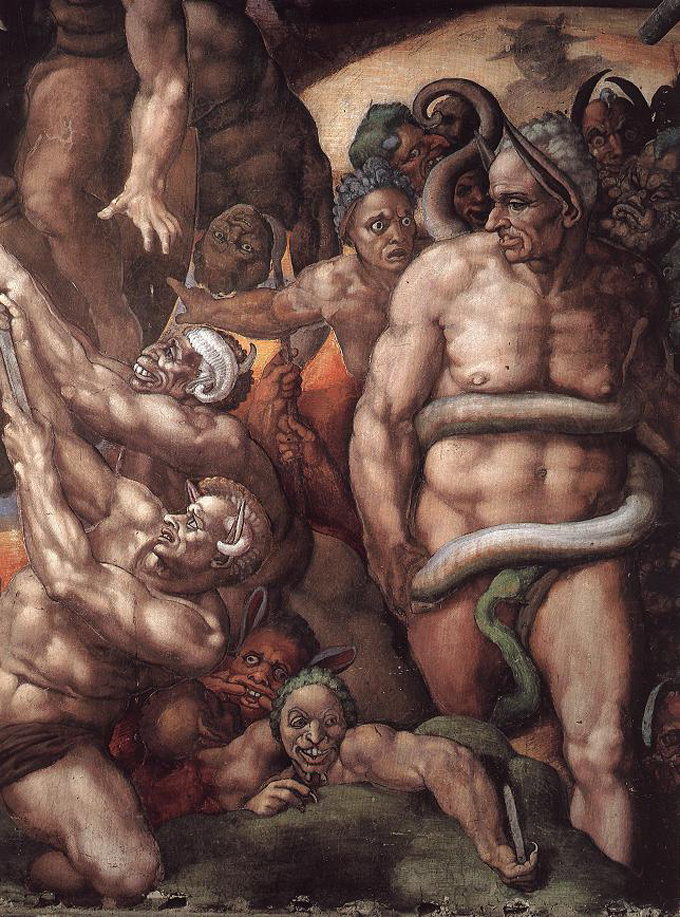
Detail from Last Judgment with Biagio da Cesena as Minos / Photo: Wikimedia
As a response, Michelangelo painted his face into the scene as Minos with donkey’s ears with a snake entwining his naked body. The Pope took note of the complaint by Biagio da Cesena but said, given his jurisdiction he could have been helpful int he purgatory but is helpless in hell. The painting remained and is seen at the bottom corner, till date.
Support us!
All your donations will be used to pay the magazine’s journalists and to support the ongoing costs of maintaining the site.
Share this post
Interested in co-operating with us?
We are open to co-operation from writers and businesses alike. You can reach us on our email at [email protected]/[email protected] and we will get back to you as quick as we can.
